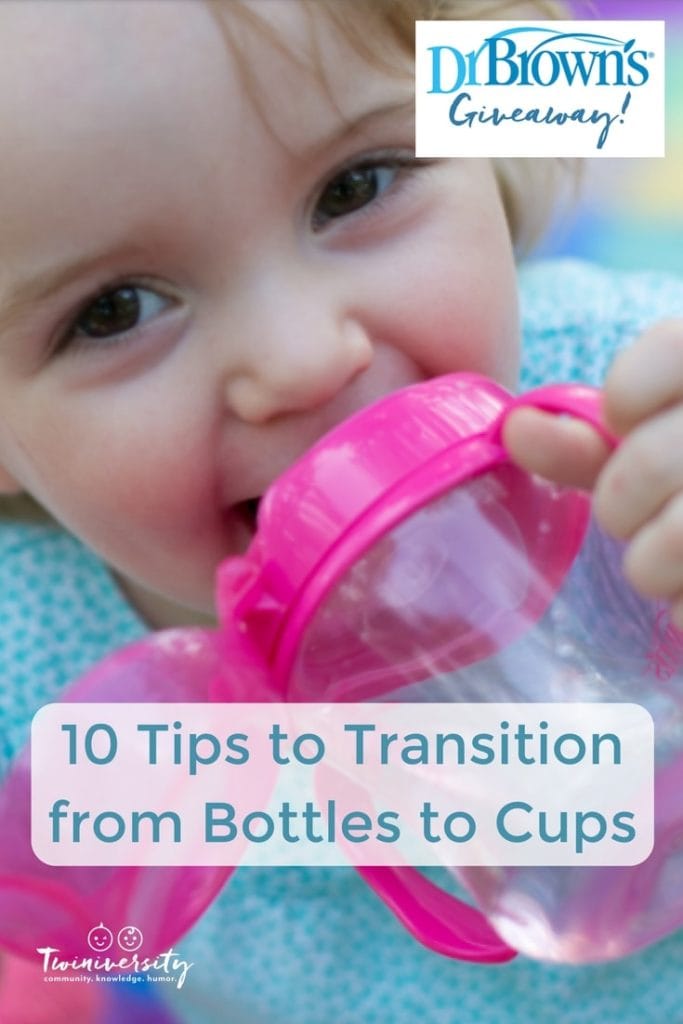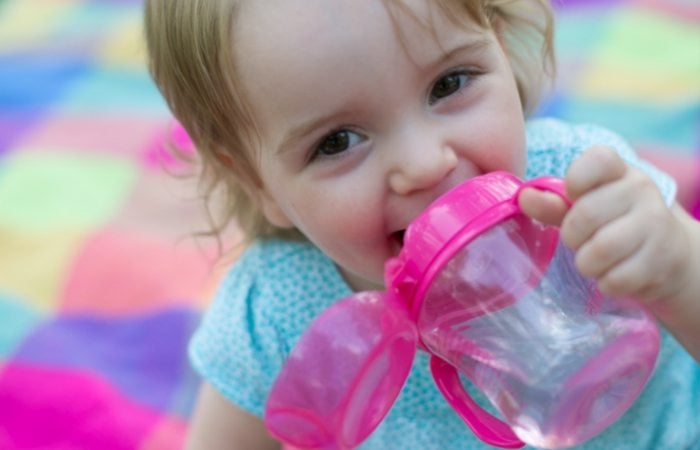Last updated on May 1st, 2024 at 02:54 pm
10 tips to transition from bottles to cups, plus we also held an awesome giveaway from Dr. Brown’s! One lucky family will win a fantastic Dr. Brown’s Sippy Cup Prize Package.
THIS CONTEST IS CLOSED but check and see what Giveaways are open right now on our Twiniversity facebook and Twiniversity instagram pages.
Dr. Brown’s Sippy Cup Prize Package did include:
- 6 Options™ 2-in-1 Transition Bottle Kits
- 6 Soft Spout Transition Cups
- 6 Soft Spout Toddler Cups
- 6 Baby’s First Straw Cup
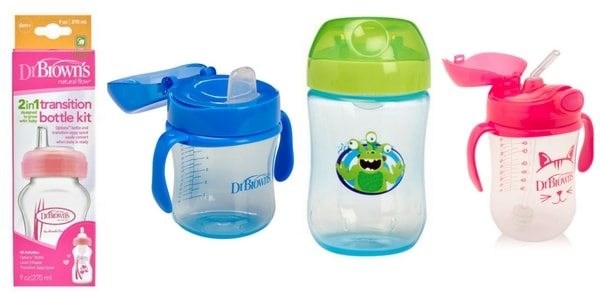
Dr. Brown’s line of sippy cups are the easiest way to help your babies make the transition from bottle to cup.
The Dr. Brown’s 2-in-1 Transition Bottle Kit is designed to grow with baby and easily converts from Options™ bottle to sippy spout. If you already own Dr. Brown’s Options bottles, you can purchase the transition spouts separately in standard neck or wide neck to help your babies more easily transition off the bottle to a spout cup.
The soft spouts and straws on Dr. Brown’s cups make sipping easy for tiny mouths. The contoured handles on both the Soft-Spout Transition Cup and the Baby’s First Straw Cup are spill-proof and travel safely with handles that are easy for little hands to hold. The Soft Spout Toddler Cup has a contoured, easy-grip shape with no handles to make it simple for toddlers to hold this cup like a grownup. All 3 cups have attached lids that stay open when your little ones drink and keeps straw or spout clean when not in use.
Transition from Bottles to Cups: 10 Tips
It was 4 am. Both babies were wide awake. Time to eat. Again.
I sighed and made yet another set of bottles. This scene repeated over and over, night after night.
In my sleep-deprived haze, I spilled one of the bottles all over the counter. I almost took a sip of it. I thought it was my coffee. This is what three hours of sleep per night does to you.
I remember asking my husband if this stage of constant bottle making would ever end as he crawled out of bed to help. I couldn’t fathom making bottles for the rest of my life, but it felt like there was no end in sight.
Then it happened. Our pediatrician gave us the go-ahead to begin the transition from bottles to cups. I did a little happy dance and searched for the best cups Amazon Prime could buy. Our daughter loved the idea of drinking from a cup. We were hoping our son would follow suit. As life with twins usually goes, they decided to do things differently. While our daughter was happy with her cup, our son was less than enthusiastic. We tried replacing his bedtime bottle with his cup. It worked great for about ten seconds. When he realized his bottle was gone he panicked. He was not giving up his “baba” easily.
I asked fellow parents of multiples and our pediatrician for advice to help make the transition smoother for all of us. Here’s what they suggested to help my twins give up their bottles for good, along with a few things we learned in the process.
1. Let Them Play
Both of my twins have always loved to play with cups in the bath tub. I took advantage of their excitement by giving them a sippy cup with a small amount of water or milk in it to drink during their bath. Our pediatrician suggested just letting them play in the beginning. It took a few weeks of playing with the cups before they got the hang of using them. Get ready to get messy! Practicing during bath time helped control the mess. I also took them outside to use their cups a few times to make clean up easy.
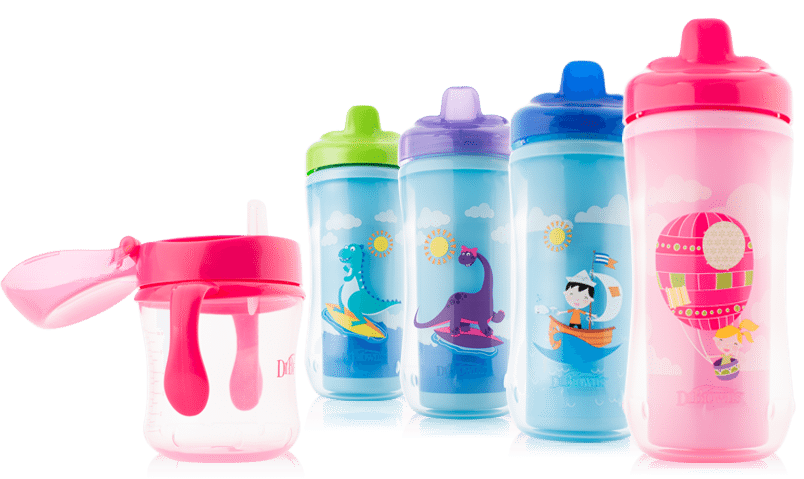
2. Try a Variety of Cups
My twins had no idea what to do with the first set of sippy cups I bought them. They had to tilt the cups to get anything to come out. The spout was nothing like their bottle nipples. I was also frustrated that the cups were not spill-proof. On to another option. The second set of cups had a straw lid that was difficult for them to drink out of. They dropped them, tried to pull the straw out, threw them… the one thing they did not do was drink from them. Finally, I found a set of spill-proof Dr. Brown’s cups with soft spouts. Thankfully, they both love Dr. Brown’s cups. My son’s cup reminds him of his “baba”.
3. Help Them Recognize Their Cup by Personalizing It
There are so many fun ways to personalize sippy cups. Let each of your multiples choose a different character, color, or vinyl decal for their cup. Try adding patterned washi tape to the handles to make each cup unique. Although they are not old enough yet to recognize their names, it’s a good idea to go ahead and begin writing their names on their things. I chose to buy different colored cups for my son and daughter. It hasn’t stopped them from constantly trying to trade cups, but at least they know which cup is theirs.
4. Transition to Whole Milk First, if Your Multiples Are Old Enough
With the go-ahead from our pediatrician, we began substituting a small amount of formula in our twin’s bottles with whole milk. Around their first birthday, they were fully transitioned to whole milk. My husband and I decided to help our twins make the transition to whole milk before introducing cups. We wanted them to get used to drinking whole milk before offering it in a cup.
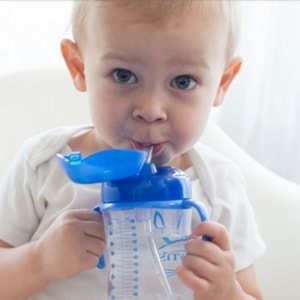
5. Have a Cup Celebration
After realizing my son was not going to give up his bottle until all the bottles were hidden from sight, I decided to have a simple cup celebration. One of my friends with multiples did a small celebration with each of her children when they gave up their bottle. It helped them understand and accept the transition. It had to be worth a try. One night I filled my son’s sippy cup with milk and made sure all the bottles were hidden. I told him it was a special night because he didn’t need his “baba” anymore. I told him his sister didn’t need hers anymore either (twin peer pressure). She didn’t seem to need the pomp and circumstance, but I could see my son did. If that’s what it took to end the nightly bedtime battles, so be it. We clapped and cheered, then read a book together. I let him know he could still have milk from his cup if he needed it. Although he eventually found out where I hid his bottles, our little ceremony helped him realize he didn’t need them anymore.
6. Don’t Stress if They’re Not Ready
If you’ve tried everything and one or more of your multiples is struggling with the transition to a cup, they may not be ready. I worried at 16 months when my son was struggling to give up his bedtime bottle. I felt a wave of Mom guilt and began to play the comparison game when I asked the moms I know when their children gave up bottles. Most were cup experts by the time my son was just beginning the transition. When I brought up my concerns with the pediatrician he smiled and told us our son will be just fine. I decided to let go of the guilt and let my twins develop at their own pace.
7. Make Their Cups Easily Accessible
The last thing you want to do 300 times a day is bring multiple children their cup. Mine love to try to stand on a stack of books or anything they can find to reach their cups if they are placed out of reach. I chose a specific spot on a low shelf where they can easily grab their cups when needed. Making their cups easily accessible encourages them to practice using them.
8. Think Outside the Sippy Cup Box
Although sippy cups can be a helpful tool, there are cons to using them. The AAP recommends children learn to use an open cup by their 2nd birthday. They also warn against giving children milk or juice in a cup before bed due to tooth decay concerns. They can also develop an attachment to their cup similar to a bottle if they are allowed to carry it around for security. This can also lead to an increased risk of falls as your toddler tries to balance walking while carrying a cup. The sooner you can get your multiples to begin using an open cup, the better. I prefer to use small paper cups. They are just the right size for little hands.
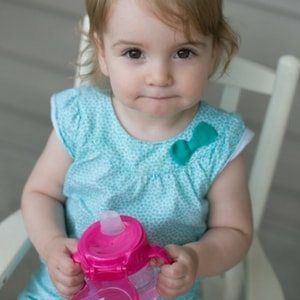
9. Look for the Right Features in a Cup
It’s best if the first cup your multiples learn to use has a spout that is similar to the nipple on their bottle. Check with the company that makes the bottles you use. They may make a transitional cup you can try. It also helps if you choose a cup with handles until your multiples have good enough coordination to hold onto a cup without spilling it. Spill-proof lids are helpful, too.
10. Transition Gradually
Any goal is easier to achieve when completed in baby steps. Forcing the issue will just lead to more frustration and tears. If there is one thing I’ve learned as a twin parent, it’s to allow my twins to develop at their own pace without comparing them to singletons or other twins. Start slow and get your multiples excited about all the new skills they are learning. They will begin using cups in their own time.
Twiniversity Tip: Start your twins on sippy cups around 6 months old with only water to practice. That way by the time they get to their first birthday they are used to using a sippy cup and will transition off the bottles a bit easier.
For most toddlers, it takes practice, time, and patience to give up their bottle completely. If one of your multiples needs a bottle for comfort a little longer than expected, why not let them have it? If they are not ready, they’re not ready. They’ll get there. Our job is to encourage and support them as they learn new skills and gain more independent each day.

Melissa Titus taught Kindergarten and 2nd grade in the public school system for ten years. She is taking a break from the education field to begin her new adventure as a SAHM to her boy/girl twins born n July 2016. When she’s not spending time with her husband or taking care of her twins, she loves to write, bake using her great grandmother’s recipes, support others still in the midst of infertility, and explore the great outdoors while attempting to photograph it. You can follow her on Instagram, Twitter, and Pinterest.
Related Articles
- 5 Features to Look for In a Sippy Cup
- 5 Tips to Introduce Baby Food to Twins
- Weaning From Breastfeeding to Sippy Cups at Age 1
THIS CONTEST IS CLOSED
Sweepstakes Terms & Conditions
